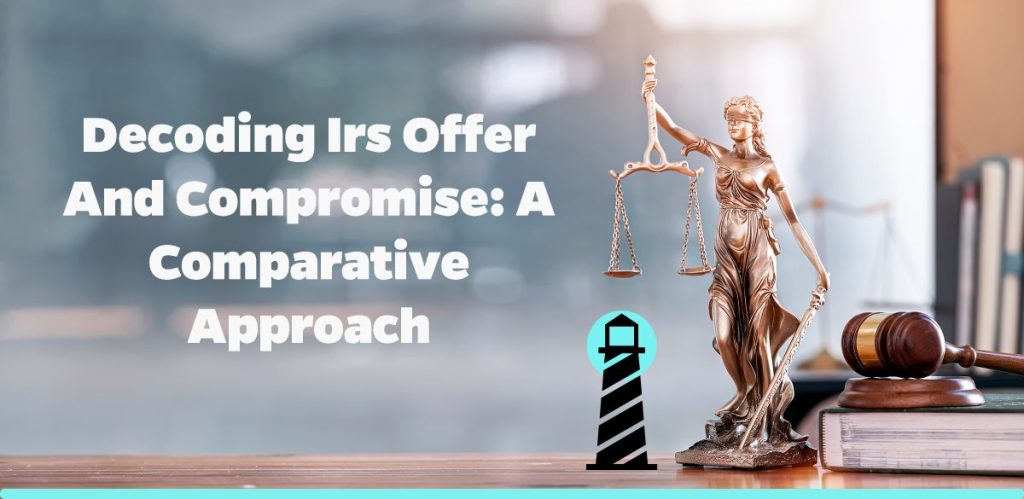Decoding IRS Offer and Compromise: A Comparative Approach
As a nationwide tax relief company, Brightside Tax Relief LLC understands that the world of tax debt can be daunting, complex and overwhelming. Getting to grips with concepts like IRS Offer and Compromise is a crucial step in managing your tax debts. Therefore, we are dedicated to providing a comprehensive educational narrative that can help both individuals and businesses better understand these necessary tax relief procedures.
Understanding IRS Offer and Compromise
When navigating the labyrinth of tax-debt management, stumbling upon the IRS Offer in Compromise (OIC) is not unusual. Simply put, an IRS OIC allows taxpayers who cannot fully pay their tax debts to negotiate a settlement amount that is less than the total owed.
A key point is that the IRS will not accept an OIC unless they are convinced that the offered amount is equal to or more than the Reasonable Collection Potential (RCP). The RCP is an extensive calculation that includes the value of your assets such as real estate, vehicles, bank accounts and other properties.
Navigating the Three Types of OICs
The IRS recognizes three types of OICs, namely: Doubt as to Collectability, Doubt as to Liability, and Effective Tax Administration.
- Doubt as to Collectability involves a situation where the taxpayer cannot pay the tax debt in full.
- Doubt as to Liability occurs when there is a chance that the assessed tax liability is incorrect.
- Effective Tax Administration caters to unique situations where collection would create an unfair economic hardship for the taxpayer.
Understanding these types can help you determine your eligibility for the OIC program, and which type best suits your situation.
Exploring the Comparative Approach
When contrasted with other forms of tax-debt management programs, such as Installment Agreements where taxpayers make monthly payments over time, the OIC provides a quicker resolution. However, it also involves a more rigorous examination process and isn’t guaranteed to be accepted by the IRS.
Notably, applying for an OIC does not put an automatic halt to the process of levies and seizures. Hence, in contrast with the Immediate Hardship Status or the Appeals Process, taxpayers’ assets may not be safe during the negotiation process.
Gauging the Probability of Acceptance
The fact remains that not all Offers in Compromise applications are accepted- a pointed fact on the IRS government website. To enhance the possibility of acceptance, you must be in compliance with all filing and payment requirements. Additionally, all statements made in your application must be accurate to avoid penalties.
Deep Dive into the Application Process
The application process for an OIC involves filling out Form 656-B and providing detailed financial statements to support your claim. Moreover, a non-refundable payment must be submitted with your application. The IRS website provides a comprehensive OIC Pre-Qualifier tool to aid in deciding if this is the best fit for your needs before you embark on the journey.
Bolstering your Application with Expert Support
One of the foremost steps in optimizing your OIC application is to team up with a Tax professional. This increases your chances of acceptance as your application is equipped with expert insights. At Brightside Tax Relief LLC, we’re dedicated to providing thorough assistance to help navigate the complexities of an OIC application.
In Conclusion
Journeying through the world of IRS Offer and Compromise can seem like a task; however, armed with adequate knowledge, it becomes less threatening. Brightside Tax Relief LLC is committed to bringing clarity to complex tax procedures to help individuals and companies navigate their path to tax debt relief.




